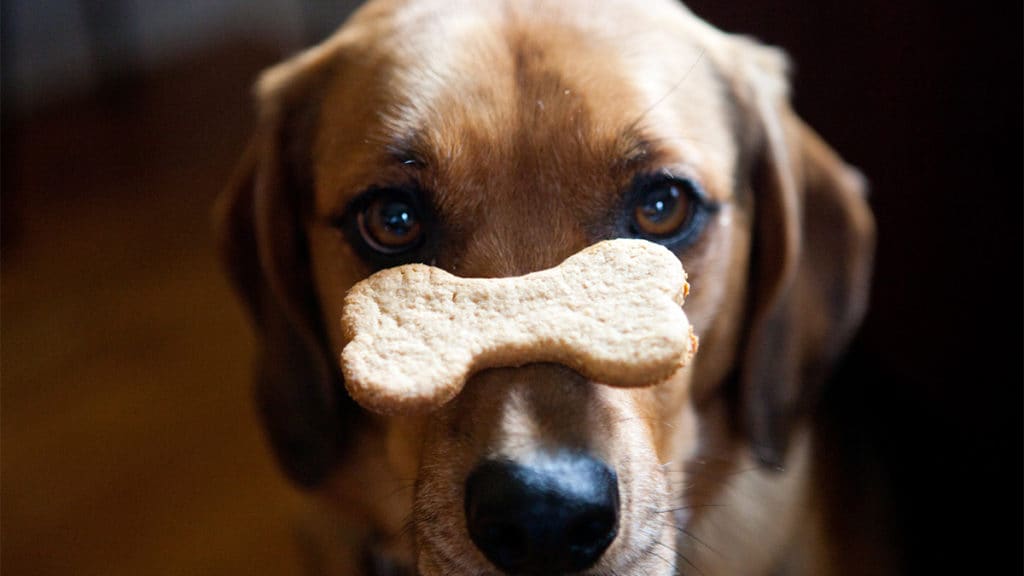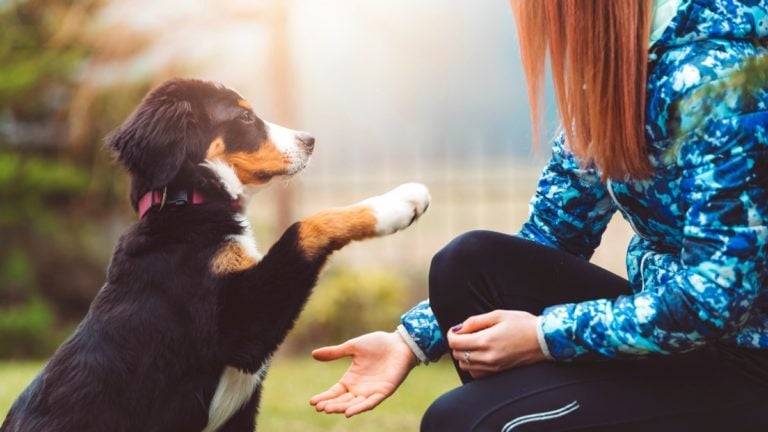Treats can be a useful training tool, so long as they’re used to reinforce good behavior and not given in excess. Don’t give treats as a way to calm an overexcited or fearful animal or to distract your pal from bad behavior habits. Your furry friend will then associate treats with the undesired behavior and act accordingly.
Dogs and Treats
Treats are great motivators for dogs to learn new tricks and behaviors. Just be sure to choose dog treats that your dog really enjoys in order to keep her interest throughout the training session. Bite-size freeze-dried treats or jerky that can be broken into smaller pieces make perfect rewards. There are also plenty of tiny soft and chewy treats that are made specifically for training.
Start with simple commands to build your pup’s confidence and to get her used to the idea of being rewarded for learning something new. Show the tasty treat to your dog, holding it above her head but out of reach. Calmly say “sit” and move the treat behind her head to encourage this action. Any time she lowers her back end toward the ground, praise her and give her a treat. Soon, she will learn to ease her butt to the ground. When your dog is calm and seated, reward her with another treat. Do it often enough and your pet will learn to sit calmly when it’s time for a treat!
Cats and Treats
Positive reinforcement works to help train cats, as well as dogs. But cats have short attention spans, so if you want to reward your kitty for using the scratching post instead of destroying the couch, give her cat treats while she’s scratching the post.
The thing to remember is that you want to reward the behaviors you want to reinforce. Many times, pet parents will unknowingly encourage unwanted behaviors. For instance, are you giving your cat food when she wakes you up in the middle of the night? It’s highly likely that she’ll learn that she gets what she wants when she does an early morning wake-up call.
Some behaviors you might want to reward include learning to use her cat litter box, staying off of forbidden counters or shelves with breakable items, or using her scratcher and not furniture.
Just be mindful of how many treats and what kind of treats you give your pets while training. You don’t want to give large or high-calorie treats, or even too many tiny treats—this can lead to excess pounds and possible health issues.
Share:













